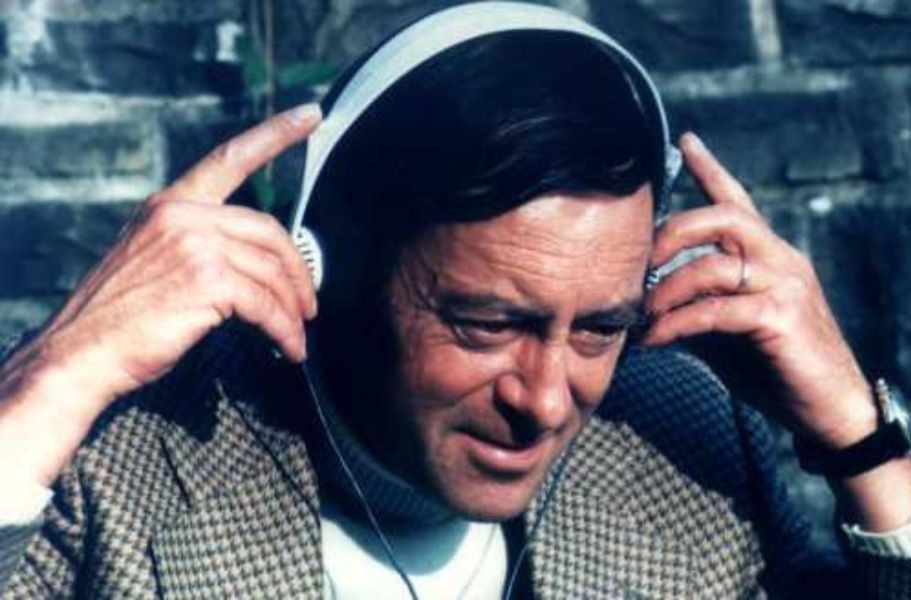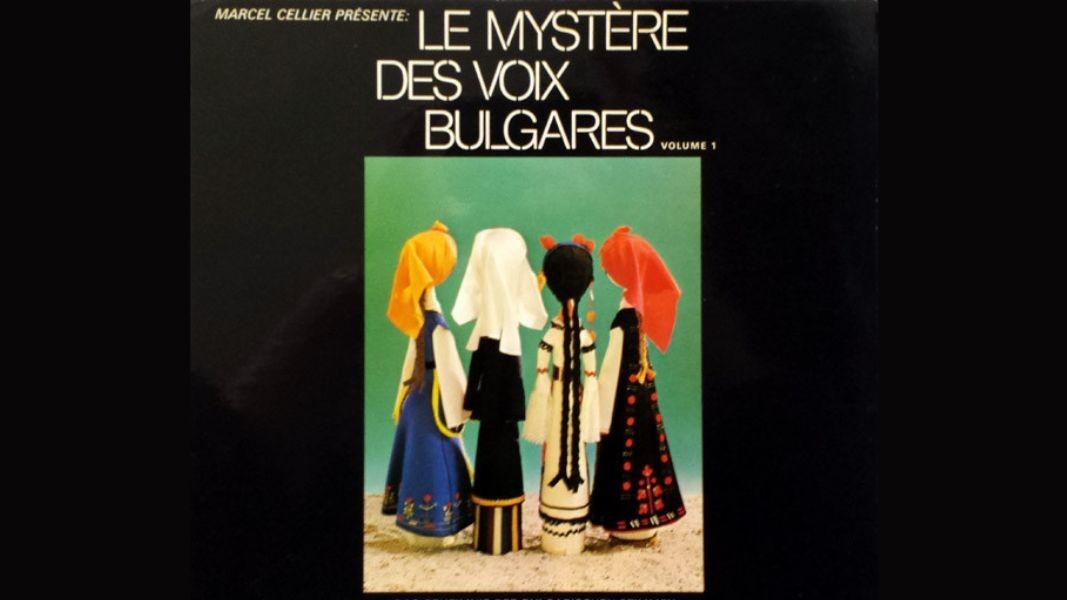The Bulgarian National Radio Folk Song Ensemble was founded in 1952 by Georgi Boyadzhiev, who was then the editor-in-chief of the Folk Music Department at BNR. At the core of the ensemble was the renowned Ougurchin Group, led by kaval player Tsvyatko Blagoev. The ensemble comprised a choir and an orchestra of traditional folk instruments arranged in sections similar to those of a symphony orchestra. Its repertoire consisted of compositions based on folk music and original works in the style of folk music. Philip Koutev, Nikolay Kaufman, Hristo Todorov and Stefan Mutafchiev were among the composers who wrote pieces for the ensemble. Its first conductor was Boris Petrov, followed by Krasimir Kyurkchiyski, Dimitar Dinev and Georgi Genov.
In 1952, Marcel Cellier, a Swiss metals trader doing business in Bulgaria, heard Bulgarian folk songs for the first time. Enchanted, he contacted the management of Bulgarian Radio, buying the rights to broadcast several recordings. He began presenting these in a radio programme called 'The Mystery of Bulgarian Voices' (Le Mystère des Voix Bulgares), produced by his wife, Catherine Cellier, and broadcast in Switzerland. The programme ran for about three decades and gave rise to the world-famous trademark that emerged as a result of Cellier's passionate research and production work.
The first album, titled The Mystery of Bulgarian Voices, was released in 1975. It won the Académie Charles Cros' prestigious award for best album and became a worldwide hit.

"These grounded young women reach — and surpass — the boundaries of vocal convention established by music conservatoires with astonishing ease," writes Marcel Cellier in the commentary to the first record. "And yet, they have retained what they learned in their villages: the melismas, the tremble, the embellishments, the ironclad fidelity to the second as a two-voice interval… They sing with astonishing precision. It’s simply a miracle. Often, they achieve a sharp atonality that contrasts starkly with Western harmonic traditions. I must admit, at first I was quite confused — the sound moved strangely during the recordings. But thanks to the education of both singer and listener, dissonance turned into consonance! A true gem, indeed!
They say that a monk in the Rila Monastery spent 12 years of his life in a dark, candlelit cell, inlaying biblical scenes onto a crucifix made of linden wood using a needle. After completing his masterpiece — and losing his sight — the monk said that perfection could only be achieved through suffering. This, to me, is how the unique vocal richness of Bulgarian women came into being. Beauty of perfection! Perfection of beauty! It is precisely between these two astonishing extremes that we must seek... the Mystery of Bulgarian voices."

"It hit me so hard emotionally that I literally had to sit down. I thought, ‘What on earth was that?" - British producer Ivo Watts-Russell recalls his first encounter with the song years later. He went on to reissue the albums in the United States, Japan and several other countries.
The next three volumes of The Mystery expanded beyond the Bulgarian National Radio Choir to include performances by the Philip Koutev, Trakia, Pirin, Rodopa, and Tolbuhin ensembles. The second volume, Le Mystère des Voix Bulgares, Volume 2 (1988), won the world's most prestigious recording award: the Grammy for Best Traditional Folk Recording.
In the 1990s, with Marcel Cellier’s permission, the women’s choir of the Bulgarian National Radio Folk Ensemble — now part of Bulgarian National Television (BNT) — officially adopted the name The Mystery of Bulgarian Voices.
It is this choir you hear performing “Wedding” by Hristo Todorov in the YouTube video below.
On 23 and 24 November, in Narva and Tallinn, the Narva City Symphony Orchestra (Narva Linna Sümfooniaorkester) under chief conductor Anatoli Shchura presents an intriguing programme featuring works by Mozart, Alfred Schnittke, and Bulgarian composer..
“Friends”, “The Main Street”, “The Tall Girl”, “Till the Last Hour”, “Guitar on the Platform”, and many more… Rock hits with deep lyrics and messages that shaped more than one generation — this is what we find in the new double live album by the band..
One of the most significant events on Bulgaria’s cultural calendar - the Festival of Opera and Ballet Art in Stara Zagora - traditionally will open with a premiere by the host company, the Stara Zagora State Opera . On November 21 and 22,..

+359 2 9336 661
